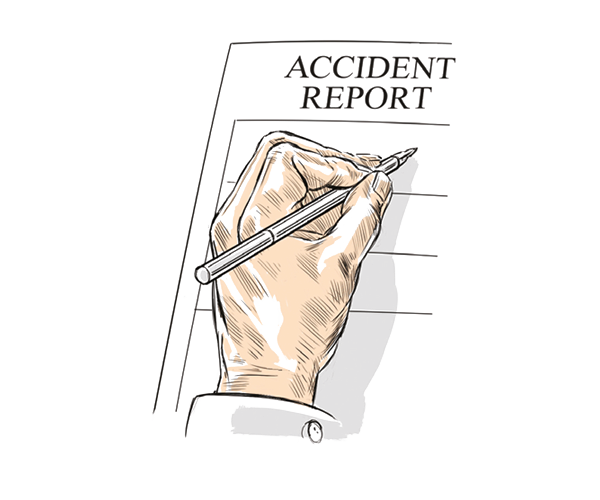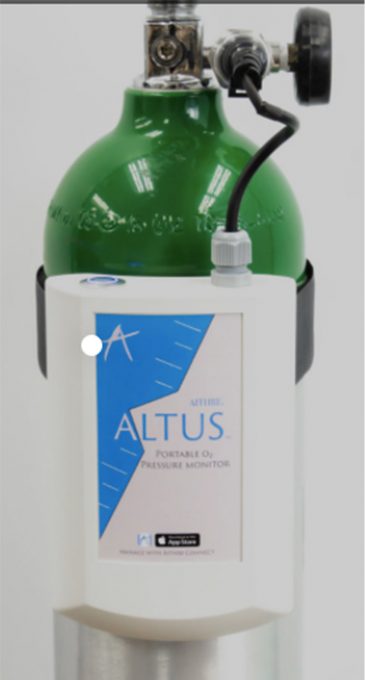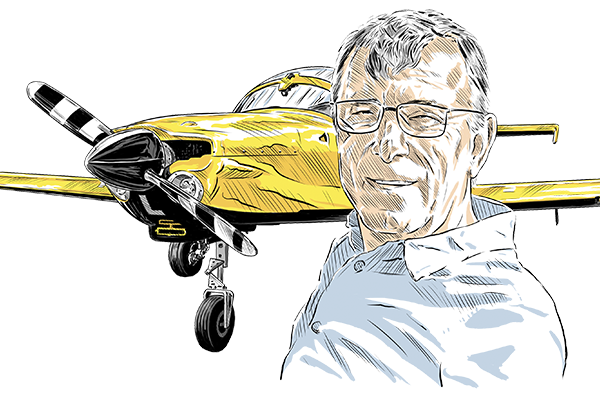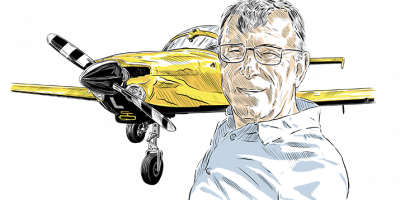Where there’s smoke…
Guimbal Cabri G2
G-CILR
Wycombe Air Park
Injuries: None
The helicopter had flown from Dunkeswell, Devon, to Wycombe Air Park, Buckinghamshire. As the pilot was shutting down the helicopter, he noticed smoke emanating from the left side of the rotor mast. He evacuated the helicopter and tried, unsuccessfully, to extinguish the fire with the helicopter’s on-board fire extinguisher. The helicopter was destroyed. Examination of the wreckage identified that the electrical cable connecting the alternator to the starter relay had short-circuited against the aluminium baffle that surrounds the engine, probably as a result of the cable clips being incorrectly fitted. As a result of this investigation, the helicopter manufacturer issued a service bulletin to instruct operators to inspect for correct installation of the cable clips and has also completed a redesign of the clips to ensure they cannot be fitted incorrectly.
Comment When we think of maintenance errors, our mind often jumps to inadequately rigged controls, fasteners improperly torqued or other gross errors. But a 10p clip can be as important as a major structural component in some circumstances.
… there is fire
Cirrus SR22
N818GM
Addison, TX
Injuries: None
The private pilot and flight instructor were conducting a cross-country instructional flight. During departure and while climbing through 2,800ft mean sea level, the pilot and instructor noticed multiple avionics malfunctions and initiated a turn back towards the airport. While the aeroplane was turning, the engine lost all power and the pilots noted indications of a fire. Because they were unable to find a suitable area for a forced landing, the pilot activated the aeroplane’s parachute system. The aeroplane descended under the parachute into a parking lot.
Examination of the engine revealed that the engine exhaust muffler attachment hardware was not secured correctly, which allowed the exhaust collector to freely rotate. A hole near the lower right engine cowling was consistent with escaping hot exhaust gas. Several components in the right forward side of the firewall were thermally damaged, and both magneto p-leads were shorted against the engine’s metal mount frame. The thermal damage interrupted both magnetos’ function, which resulted in the loss of engine power.
During a pre-buy inspection of the aeroplane, the No 1 cylinder base O-ring was replaced. The work order, dated three days before the accident, required removal of the muffler. During the muffler reinstallation, maintenance personnel likely did not correctly install the attachment hardware, which resulted in the muffler separating in flight, thermal damage that interrupted the magnetos’ function and the subsequent loss of engine power.
NTSB Probable cause Maintenance personnel’s improper installation of the muffler attachment hardware
Comment After any maintenance, anything that may have been moved, adjusted or otherwise touched should be treated with a bit of suspicion for a time. Over the next few flights, an extra careful pre-flight inspection might just be time well spent.
Unscheduled departure
Pitts S2-B
F-GEAL
Meaux Esbly, France
Injuries: None
The pilot of a Pitts S2-B took off for an aerobatic flight during which he performed several figures, leading to a rapid variation in the orientation of the axis of rotation of the propeller.
Returning from the flight, on the downwind leg, the pilot felt vibrations which increased in intensity. He reduced engine power and declared an emergency. The assembly formed by the propeller and part of the crankshaft separated from the engine and struck the fin. Observing the appearance of smoke and the presence of oil on the windscreen of the aeroplane, the pilot shut down the engine and performed a forced landing.
The accident resulted from progressive fatigue cracking and then the rupture of the crankshaft due to the propeller applying rotational bending loads to the crankshaft during certain aerobatic manoeuvres. The investigation showed that the combination of Lycoming AEIO-540 engines and Hartzell two-blade metal propellers, when used in aerobatic flights comprising certain manoeuvres with a strong gyroscopic effect, constituted a higher risk factor of crankshaft rupture.
In 1988, the engine manufacturer, Lycoming, issued a Service Bulletin (SB) recommending a visual inspection of all the crankshaft area situated between the oil seal and propeller flange. This inspection, which must take place every 10 hours of aerobatic flight including figures in the ‘unlimited’ category, requires the removal of the propeller, starter ring gear and oil seal.
The complexity, frequent repetition and time required to carry out the tasks specified by this SB make its application restrictive and the operators consider it unrealistic.
This SB did not give rise to the publication of an Airworthiness Directive (AD) by the FAA, primary certification authority of the aeroplane, engine and propeller. The Australian and New Zealand civil aviation authorities imposed compliance with this SB by issuing an Airworthiness Directive. The BEA has recorded several accidents similar to that of F-GEAL, concerning aerobatic aeroplanes equipped with a Lycoming engine and two-blade metal propellers. It is probable that their operators were not aware of this SB. The inspection specified by this SB was not carried out on F-GEAL.
BEA Recommendation Without waiting for action by the FAA, EASA inform the operators of aeroplanes equipped with the engines concerned by Lycoming Service Bulletin No 482 and Hartzell two-blade metal propellers of the risks of crankshaft rupture associated with ‘unlimited’ type aerobatic manoeuvres.
Soft planning
Piper PA38
N6400A
Taylor, TX
Injuries: None
The flight instructor and student pilot were conducting a training flight, which included touch-and-go landings. During the landing rollout and with about 2,000ft of runway remaining, the instructor directed the student to transition to a soft-field take-off. The student conducted the take-off and attempted to climb with a high pitch attitude, but the aeroplane settled back to the ground off the end of the runway.
The aircraft subsequently impacted a ditch, which resulted in substantial damage to the fuselage. The instructor reported that the pitch attitude during the climb out was too high and that he should not have directed the student to attempt a soft-field take-off given the runway distance remaining.
NTSB Probable cause The flight instructor’s poor supervision of the student’s soft-field take-off, resulting in an excessive pitch attitude, settling effect and impact with a ditch off the end of the runway.
Comment When training, it’s worthwhile to ask if what you are doing represents a situation you might experience. Soft-field take-offs are certainly a skill we all need to practise, but doing it from a touch-and-go isn’t terribly representative of how it will occur in real life.
Laid back
Cessna 182
N9101X
Arlington, Washington, USA
Injuries: None
The pilot reported that he had the seat all the way back and that he was checking the weather, as he planned to perform a 10-minute-long engine warm-up. After five minutes, he noticed that the engine rpm increased from 800 to 1,200.
He recalled that when he noticed the increase in engine rpm, he was about to adjust the throttle, but the aeroplane began to roll and collided with a hangar.
The pilot added that the accident could have been prevented by keeping his feet on the brakes during the engine warm-up. The aeroplane sustained substantial damage to the left wing.
NTSB Probable cause The pilot’s distraction during the engine
warm-up, which resulted in the aeroplane’s collision with a hangar.
Comment Some pilots learn to not trust a parking brake from their instructor, others learn by watching others and some learn for themselves.
Fight or flight
MAULE MX7
N524TR
Post Mills, Vermont, USA
Injuries: None
The pilot of the tailwheel-equipped aeroplane reported that, during landing on a grass strip, the aeroplane bounced and he subsequently performed a successful go-around.
On the second landing attempt, shortly after touchdown, the aeroplane bounced again and instead of going around, he ‘decided to try to save the landing’.
Shortly after the aeroplane stopped bouncing, it veered left, exited the runway to the left and impacted trees.
NTSB Probable cause The pilot’s failure to maintain directional control during landing, which resulted in a runway excursion and subsequent impact with trees.
Comment Bounced landings rarely get better with a lot of fixing. The earlier that the decision is made to go-around, the easier it will be and success more likely.






